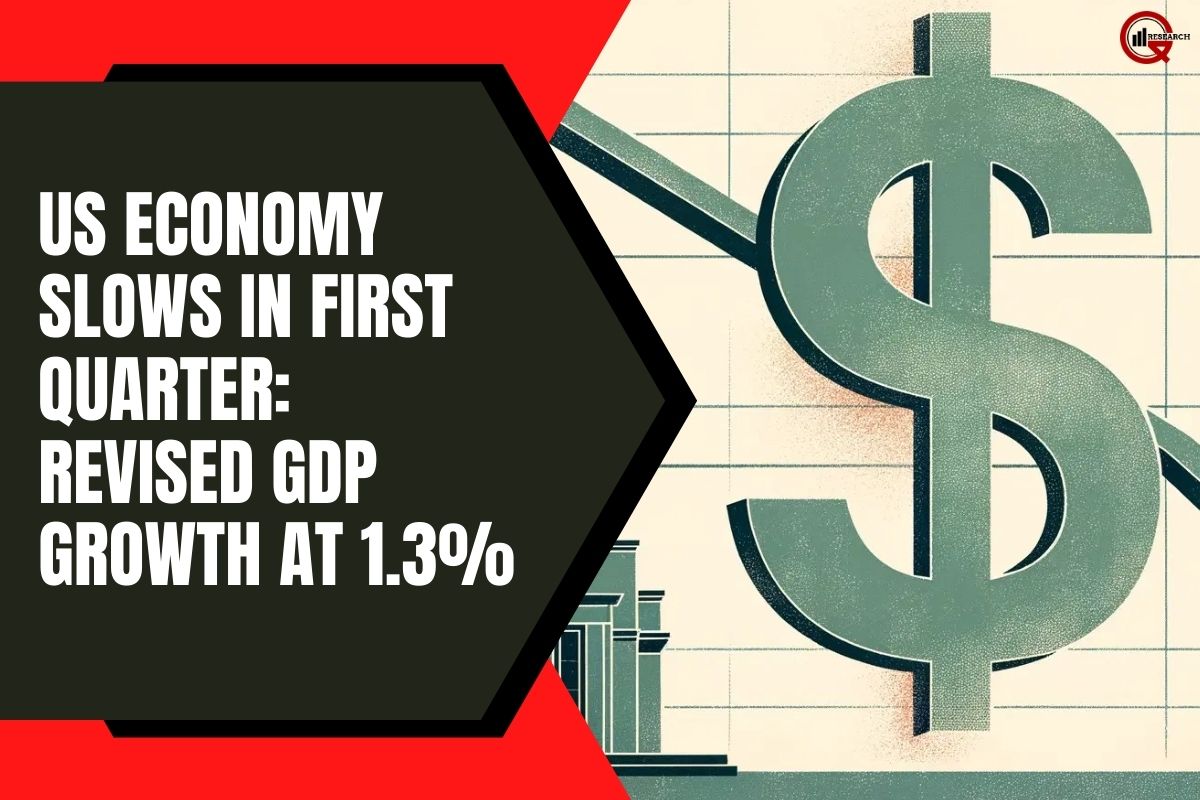(Source – Finimize).
The US economy expanded at a slower pace than initially reported in the first quarter of the year. The Bureau of Economic Analysis (BEA) released its second estimate for the first quarter Gross Domestic Product (GDP), showing an annualized growth rate of 1.3%, down from the preliminary estimate of 1.6% reported in April. This adjustment aligns with economist predictions and highlights a slight deceleration in economic activity.
Consumer Spending Drives Revision
The primary factor behind the downward revision was a reduction in consumer spending. Initially reported at 2.5%, personal consumption growth was scaled back to 2% in the updated analysis. This reduction in consumer spending is significant, given that it is a major driver of overall economic activity. Despite this, the economy still demonstrated underlying strength in other areas.
In contrast to the first quarter’s revised growth, the fourth quarter’s GDP was revised upward to 3.4%, showcasing a more robust end to the previous year. Nationwide financial markets economist Oren Klachkin noted that while the lower headline growth figure might seem discouraging, it conceals solid underlying momentum. “Private domestic sales to domestic purchasers showed a healthy expansion of 2.5% annualized,” Klachkin stated, indicating that core economic activities remain strong despite the overall slowdown.
Market Sensitivity, Revised GDP Growth and Future Outlook
The slowdown in GDP growth comes at a critical time, as markets are highly sensitive to economic data that may influence the Federal Reserve’s monetary policy decisions. Persistent inflation has been a concern, with the fear that rapid economic growth could further fuel price increases. However, many forecasters do not see the first quarter’s slower growth as a precursor to a broader economic downturn.
Prior to the revised GDP data, Goldman Sachs projected a robust 3.2% annualized growth for the second quarter. Similarly, the Atlanta Fed’s GDP Now model is forecasting a 3.5% growth rate for the same period. These optimistic forecasts suggest that the economy is expected to rebound and maintain a healthy expansion rate in the near term.
Klachkin also expressed optimism about the economic outlook, noting that monthly data beyond March indicate a continued, albeit gently cooling, economic expansion. “We anticipate continued GDP gains this year and a healthy advance in 2024 overall,” Klachkin added, reinforcing the belief that the US economy will sustain its growth trajectory despite short-term fluctuations.
In summary, while the first quarter GDP growth revision to 1.3% reflects a slower start to the year, the underlying economic fundamentals remain strong. Consumer spending, a key component of GDP, saw a downward revision, but other core economic activities continue to show resilience. Market expectations for the second quarter and beyond remain positive, suggesting that the US economy is poised for continued growth amidst cautious optimism.






